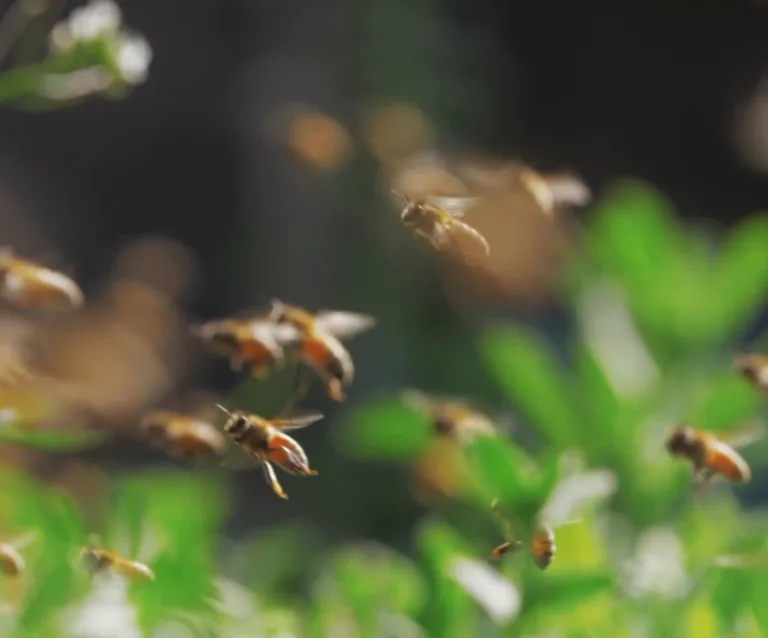Menu

Despite its small size, a bee’s brain exhibits the ability for impressive communication, problem-solving, and metacognition. “If we study intelligence not just in humans but in other living things, potentially in machines, we can tidy up the definition of what intelligence is and where we draw the boundary on what’s intelligent and what’s not," says Dr. Andrew Barron, a leading expert in animal cognition, specializing in the honeybee.
Dr. Barron and his colleagues have built a computational model of the bee brain in the virtual world. The model has become a dynamic system in which data can run through the computational bee brain and the output can then be analyzed. Information gleaned from the examination of the simply structured minds of invertebrates can lead to accurate hypotheses for more highly structured and diverse intelligences. The simplicity of the honeybee brain has made it accessible for thorough study. Knowledge that is being gained from this research is expected to lead to deeper understanding of more complex thinking systems.
Even though the honeybee brain is made up of only 1 million neurons (a human brain has more than 80 billion) it is still far more complex than the current state of artificial intelligence. By examining the throughput from the model of the bee brain, Dr. James Marshall is beginning to apply this knowledge to the future of autonomous drone flight.
Safety and reliability are key concerns in robotics moving forward. The advanced study and deep understanding of the bee brain make it a prudent modeling candidate for advanced artificial intelligences. Findings from the bee brain model are being applied to current and future challenges facing AI-equipped robotics and machine learning technologies which will increasingly assist humans in solving some of the most complex problems we face as a species.
Highlights from this installment of our award-winning “Stories of Impact” video series:
This video is a Jackson Wild Media Awards™ 2020 Finalist, in the categories of "Best Animal Behavior Film - Short Form" and "Best Science in Nature Film - Short Form."
Discover the podcast version of this interview.
Learn more about TWCF-funded research projects related to this episode: here and here.
Read the transcript from the interview conducted by journalist Richard Sergay featuring Dr. Andrew Barron, Associate Professor of Cognitive Neuroethology at Macquarie University in Sydney, who specializes in the honeybee brain; and Dr. James Marshall, Professor of Theoretical Computation and Biology at the University of Sheffield, who studies robotics and artificial intelligence.
Templeton World Charity Foundation’s “Stories of Impact” videos by journalist and senior media executive Richard Sergay feature human stories and critical perspectives on breakthroughs about the universe’s big questions. The inspiring narratives and observations in these award-winning videos portray the individual and societal impacts of the projects that bring to life TWCF-supported research.



